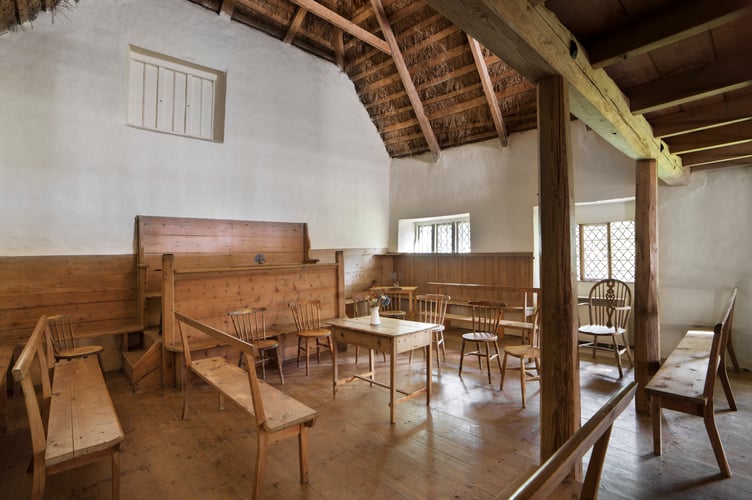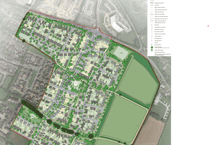The Friends’ Meeting House at Come-to-Good near Feock, one of the oldest Quaker Meeting Houses in England is one of 48 sites to have been saved and removed from Historic England’s Heritage at Risk Register in 2025.
The register offers a snapshot of the condition of England’s historic buildings and places and highlighting sites in need of care so they can be protected and enjoyed for generations to come.
Located in a quiet, isolated hamlet and surrounded by nature, this simple but picturesque building has been home to Cornwall’s Quaker community for over 300 years. After George Fox, founder of the Religious Society of Friends, arrived in Cornwall at a time when Quakers were facing persecution, a group started meeting regularly from 1680, eventually completing the Meeting House in 1710.
The Meeting House is built of white-painted cob, a blend of earth and straw, with a thatched roof made from combed wheat reed. With funding from Historic England, the worn roof has been re-thatched and internal woodwork repaired using traditional skills and materials, ensuring the Meeting House continues to serve as a peaceful sanctuary for worship.

Meeting House clerk Miranda Bird said: “We have an active and growing community that worships at Come-to-Good and the building brings its own special quality to our spiritual lives. We’re so grateful for Historic England’s support, including a substantial grant and expertise, in preserving our Meeting House for future generations.”
Historic England awarded £1.26-million in grants in the South West for support and repairs to 24 sites on the Heritage at Risk Register during 2024/2025. Among 33 sites added to the Heritage at Risk Register 2025, because they are at risk of neglect, decay or inappropriate development, are Dr Jenner’s Hut - the birthplace of vaccination - near Stroud in Gloucestershire.
Sites saved, brought back into use removed from the register include the Old School Coffee House in Barnstaple, North Devon, which has been transformed into award-winning affordable housing.
Claudia Kenyatta CBE and Emma Squire CBE, co-chief executives of Historic England, said: “The heritage we see all around us impacts how we feel about our local places. The annual Heritage at Risk Register gives us the opportunity to celebrate the many benefits of bringing our historic buildings back into use.
“The best way to protect our buildings is to reuse them, turning them into places of local connection and joy. The sites that have been saved and this year really highlight the benefits of working together in partnership, and with communities, to create positive, sustainable change. Together we can safeguard our heritage for future generations.”
Heritage Minister Baroness Twycross said: “We are determined to protect the heritage at the heart of our communities. It is fantastic to see so many historical sites saved for communities up and down the country. These are much-loved places and it is great to see them being brought back in to use. This year alone, our £15-million Heritage at Risk Capital Fund has been key to saving buildings like these.”
.jpg?width=752&height=500&crop=752:500)




Comments
This article has no comments yet. Be the first to leave a comment.